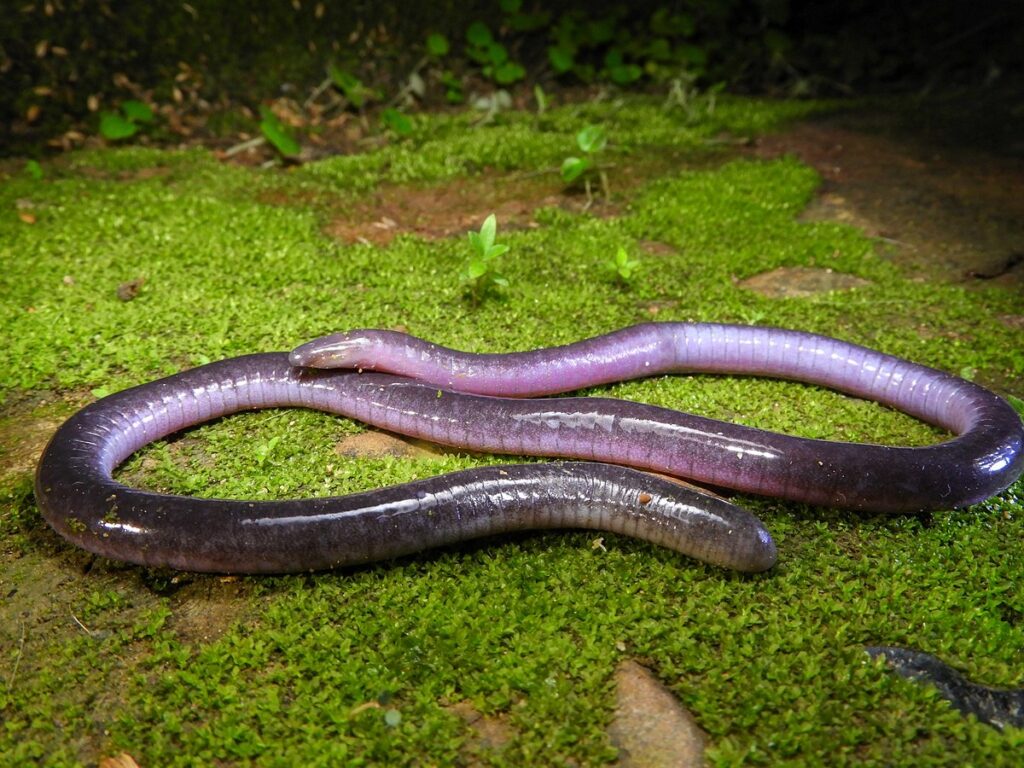Amphibians are animals that live on land and in water. They were the ancestors of today’s reptiles and mammals and the first vertebrates to appear on land, about 350 million years ago. Over 4000 types of amphibians live in almost all regions of the world, especially in hot and humid areas. Among the most popular amphibians are frogs and salamanders.

Mountain Stream Tree Frog
Image:en:user:Froggydarb, CC BY-SA 3.0, via Wikimedia Commons

Salamander
Image:Hisanori Okamiya, Hirotaka Sugawara, Masahiro Nagano, Nikolay A. Poyarkov, CC BY-SA 4.0, via Wikimedia Commons

Caecilian
Image:José Gabriel Julio Guzmán, CC BY 4.0, via Wikimedia Commons
Physical Features
Amphibians can grow to different sizes, smaller ones are only 1 cm in length and larger ones can reach up to one and a half metres. Those that live mostly on land breathe through their lungs, others, which live mainly in water have gills. An amphibian’s skin is wet and often covered with a sticky fluid that prevents it from becoming dry. Some species lose their outer skin layer several times a year. Others produce poison that protects them from enemies.Many amphibians are colourful animals that blend in with their surroundings.
Some amphibians, for example frogs have thick bodies and four powerful legs that they use to leap and swim. Toads have shorter legs than frogs and a drier skin. They have no tail. Salamanders are amphibians with a short body and a long tail, which they can grow if they lose them. These creatures , which are found mostly in temperate climate zones , live near rivers and under rocks.Caecilians look a lot like worms. They have long thin bodies without legs. These tropical amphibians are nearly blind because their eyes are covered with skin or bone. Only few of them live in water.
How Amphibians Live
Amphibians are cold-blooded animals. Their body temperature is about the same as their surroundings. Most animals move to other places to adjust their body temperature if it gets too hot or too cold. Depending on the climate, amphibians hibernate or are inactive during the year when it gets too hot or cold. They eat many different kinds of food including insects and worms.
Life Cycle
Most amphibians lay their eggs in the water. Young animals have fish-like features. After living as a larva they grow gills which allow them to breathe under water. During a phase called metamorphosis a young amphibian develops from a larva into an adult. This stage can take from a few weeks to several years. Some amphibians then lose their gills and develop lungs for breathing. They often change their appearance.

Toad carrying eggs
Image:Laurent Lebois, CC BY 2.0, via Wikimedia Commons